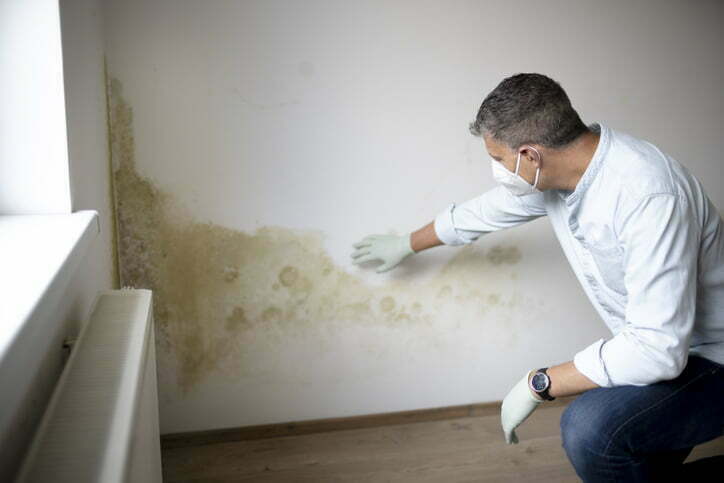Tapco HomeDry Dry Rot Treatment Caterham
We are long term members of Trust Mark and a member of the BWA. CHAS accredited contractor. In addition, all of our surveyors are trained to the high standards of the PCA (Property Care Association).



Dry Rot Specialist In Caterham
Worried about dry rot in Caterham? Don’t neglect this issue as it won’t resolve itself without intervention. Get in touch with Tapco Homedry to learn more about our dry rot treatment for Caterham homeowners. We can help to restore your home and prevent further damage.
What is dry rot?
Dry rot is a common fungus also known as Serpula lacrymans. It is more likely to be found in forests where it plays an essential role in breaking down fallen timber to make space for new growth. It secretes an enzyme capable of digesting wood, which makes it a threat to your home structure if it is able to thrive inside your property.
While the name might suggest that it needs dry conditions to thrive, the name actually refers to how the timber is left once the fungus has finished digesting it. Dry rot needs damp conditions to thrive, which is why we often see this as part of a moisture ingress problem. If you think you might have a damp problem in your home, you could also be at risk of developing a dry rot problem.
This is not an issue you should ignore. The timber left behind by dry rot will be brittle and will crumble easily between your fingers. It lacks all structural integrity, which makes it a risk factor for further structural damage in your home. If you suspect you might have dry rot in your property, get in touch to learn more about how we can help.
How to spot dry rot in your home
Learning how to spot the early signs of dry rot in your property is a great first line of defence against this common issue. If you can address the problem before it spreads, you’ll have a better chance of limiting the damage.
The first sign of dry rot in the home is usually a damp and musty odour. Upon further inspection, you might find a furry white fungus on wooden structures. As this spreads, it will develop a rusty orange bloom that spreads from the centre. This will spread orange spores throughout your home, and these can look like brick dust when they settle on surfaces.
Once the fungus has finished digesting the wood, it will look darker than surrounding wood. It will also be very brittle and will break apart easily in your fingers. Another telltale sign of dry rot is the cuboidal cracking structure which causes the wood to break down into little cube shapes.
How is dry rot treated?
The first step is to address any active fungus by using a fungicidal treatment on the wood. This will stop it from spreading any further. We then need to address the damp problem and also replace any affected timber to help restore structural integrity. We can handle the process from start to finish, so you can have confidence in the results.

Dry rot experts in Caterham
If you’re worried about the risk of dry rot in Caterham, get in touch with our team today. We provide a comprehensive service that will tackle the problem at the source, so you can limit damage to your home or business.
Is dry rot the same as wet rot?
While both might impact timber structures in the home, they are caused by different types of fungus and require very different conditions to thrive. As the name suggests, wet rot requires higher moisture levels, usually around 50%. Dry rot still requires moisture, but usually at around 25%. Both suggest a moisture ingress problem, but wet rot is more severe. Dry rot leaves wood looking brittle and dried out, while wet rot leaves it soft and spongy.


 Damp Proofing
Damp Proofing Basement Damp Proofing
Basement Damp Proofing Water Damage
Water Damage Condensation Control
Condensation Control Dry Rot Treatment
Dry Rot Treatment WOODWORM & WET ROT
WOODWORM & WET ROT CAVITY Wall Ties
CAVITY Wall Ties Property Maintenance
Property Maintenance Waterproofing And Tanking
Waterproofing And Tanking Structural Repairs
Structural Repairs
